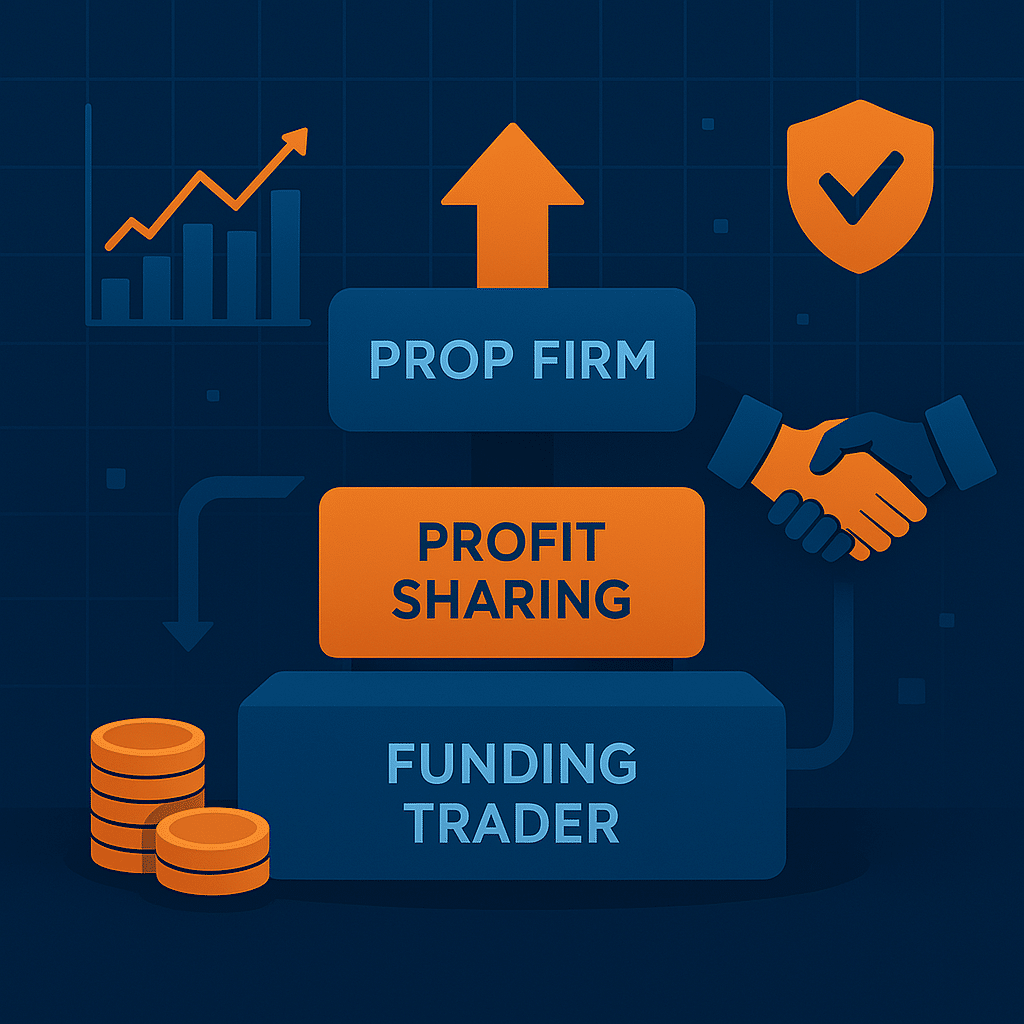Prop Trading Business Model: How Prop Firms Make Money (And Why It Matters)
The prop trading business model is often misunderstood by traders. However, understanding how a prop firm generates revenue can directly impact your decisions and success as a trader. It helps you determine whether the firm is genuinely aligned with your growth or primarily focused on extracting fees.
Key Revenue Streams in the Prop Trading Business Model
Evaluation Fees from Traders
Most proprietary trading firms generate income by charging evaluation or challenge fees. Traders pay these to prove their skills before accessing a funded account. While this model can be sustainable, it’s important that the firm doesn’t rely solely on failed attempts.
Profit Sharing from Funded Traders
A healthy prop trading business model is one that rewards traders for performance. Once traders pass evaluations and trade funded accounts, firms earn from profit splits. This creates a win-win structure where both the trader and the firm benefit when trading results are consistent and profitable.
Subscriptions and Add-on Services
Some prop firms offer optional tools, fast-track programs, or educational content. These services generate extra revenue while supporting traders with better resources. When structured properly, they complement—not replace—the core revenue from live trading performance.
Platform Partnerships and Affiliate Integrations
Prop firms sometimes collaborate with trading platforms, brokers, or data services. These partnerships may produce recurring affiliate revenue or discounted services. Although less visible to traders, it supports the firm’s sustainability and overall profitability.
Why Understanding the Prop Trading Business Model Matters
Transparency Builds Trust
Traders who understand a firm’s financial structure are better equipped to choose the right partner. A firm that thrives when its traders succeed is more likely to invest in their success, offer solid support, and provide fair trading conditions.
Larsa Capital, for instance, stands out by offering real funding opportunities, fair evaluations, and a payout system that supports long-term traders. This balance creates a sustainable relationship between the firm and its traders.
Avoiding Red Flags
If a firm’s model appears to depend heavily on failed challenges or recurring payments with no clear value, it’s a warning sign. This kind of structure may prioritize short-term revenue over developing real trading talent.
Aligning with the Right Prop Firm Strategy
Balanced Revenue is a Green Flag
A well-rounded prop trading business model includes revenue from both evaluations and live trading profits. This balance ensures the firm isn’t relying on churn, but rather on cultivating long-term, successful trading accounts.
Sustainable Growth Means Mutual Success
When the firm profits from your success, both parties have a clear incentive to maintain risk management, follow rules, and scale gradually. Traders should seek firms that offer clear communication, transparent funding conditions, and continuous support.
Conclusion
Understanding the prop trading business model helps traders choose a firm that shares their goals. Rather than falling for flashy promises, focus on how the firm earns and grows. Larsa Capital exemplifies this balanced approach—supporting traders with fair programs, real funding, and a model that grows as they do. By aligning yourself with the right business structure, you’ll not only trade smarter but thrive in the long run.

